Profile of George Robertson- Winner of the 1908 Vanderbilt Cup Race
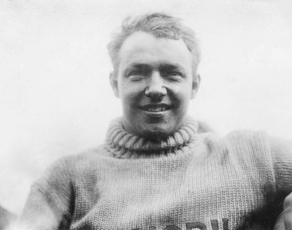
In preparation for Wednesday's Long Island Motor Parkway Preservation Society Meeting, below is a profile of driver George Robertson.
Enjoy,
Howard Kroplick
Robertson' s First Exposure to Automobiles and Racing
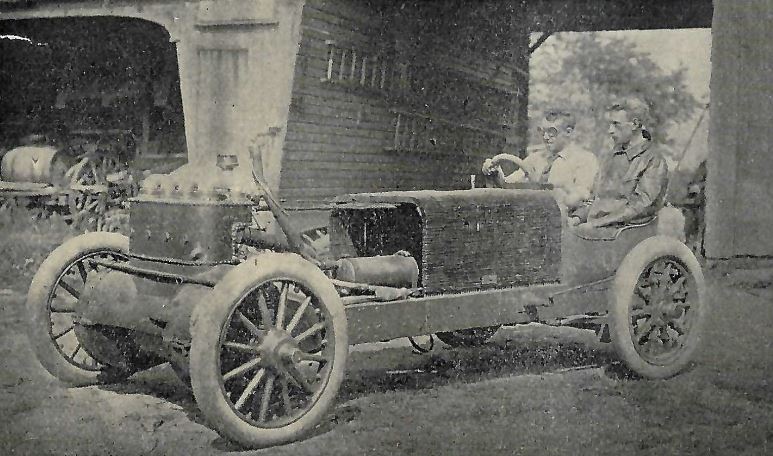
Born in New York on November 22, 1884, George Hepburn Robertson was the son of John Robertson, who in 1901, after a career in railroads and street cars, founded the Automobile Exchange and Storage Company, one of the first US companies to sell used cars. That gave George a taste of automobiles at an impressionable age and it was no surprise that his life became intertwined with automobiles.
By age 20, he was competing in hill climbs and short-distance track racing. His first shot at big time racing came in the 1905 American Elimination Race for the Vanderbilt Cup Race, where he struggled with the faltering front wheel drive Christie until he slid off the course and into a ditch. While the race commission exercised discretion in selecting the Christie as one of five American entries in the Vanderbilt Cup Race, it was conditional on the young driver stepping aside for the more experienced Walter Christie to drive
The Crash Before the 1906 Vanderbilt Cup Race
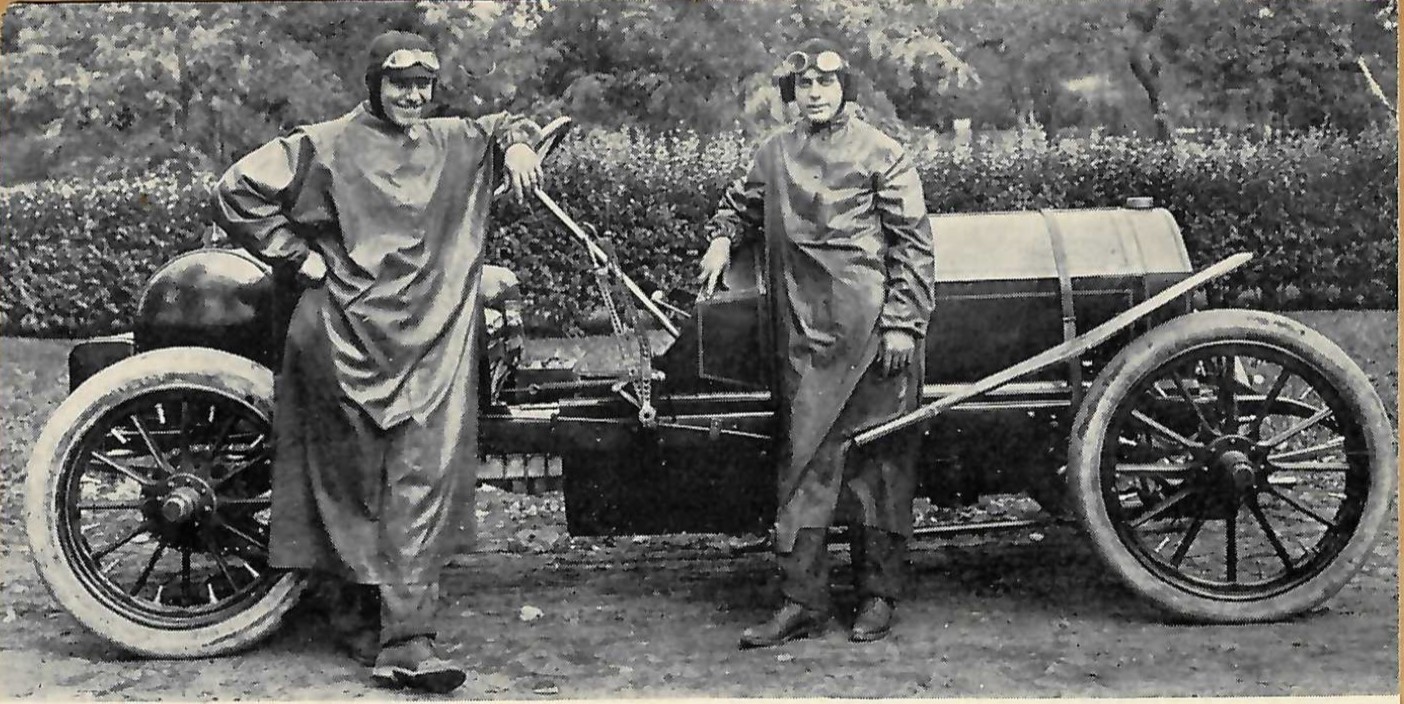
Robertson returned for a try at the big Long Island race in 1906, dazzling spectators and officials alike with astounding speed in his Apperson “Jackrabbit” racer. After turning the fastest laps in practice for the 1906 American Elimination Race, Robertson miraculously escaped death when the Apperson’s steering mechanism failed and the car suddenly shot off course to hit both a telegraph pole and a tree. The car, three feet off the ground, was literally wrapped in a pretzel-like fashion around the pole with its front and right ends nearly touching each other.
In 1907, the year the Vanderbilt Cup Race was cancelled, Robertson teamed with mechanician Al Poole to compete in several 24-hour races, which were popular at the time. They drove a Simplex, painted red on the left side and green on the right, to first in class on a muddy track at Morris Park, New York. With Robertson and Poole at the wheel, the car was campaigned in seven endurance contests that year, always finishing in the top ten.
His Greatest Racing Year: 1908
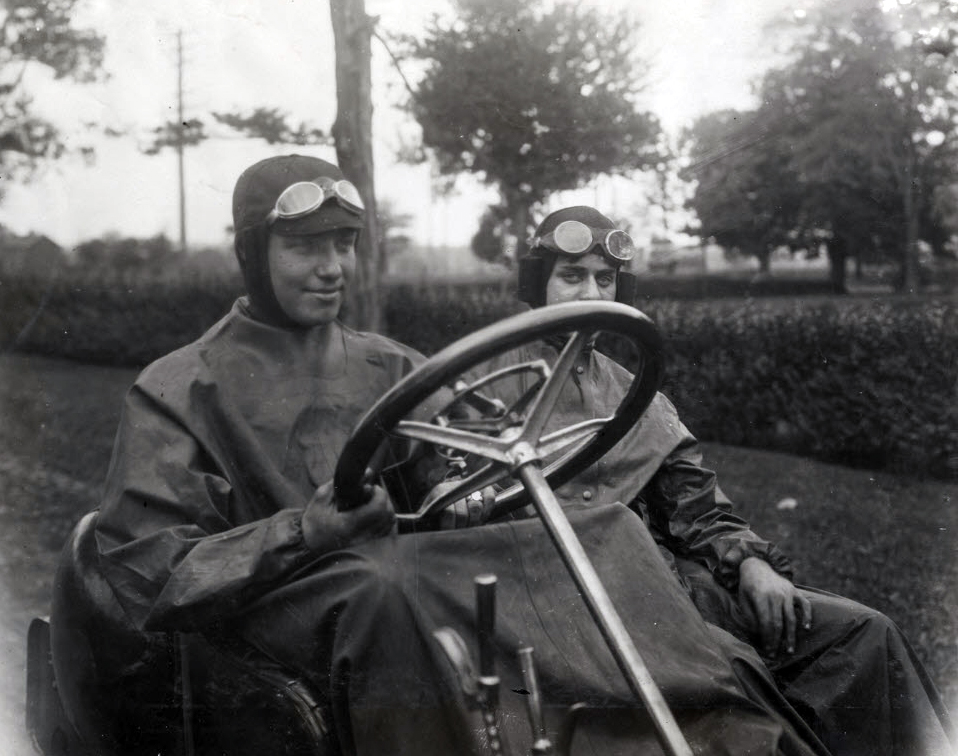
Robertson’s greatest year as a driver was clearly 1908. In the course of a month he earned victories in three different events. He and co-driver Frank Lescault won a 24-hour endurance contest at the Brighton Beach dirt oval, setting a new record by covering 1,177 miles.
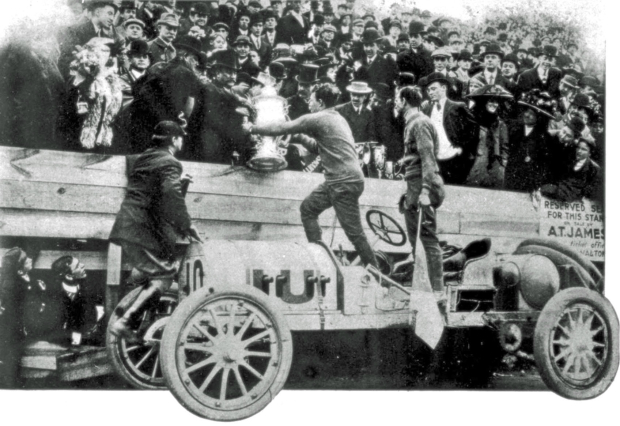
A week later, Robertson, in an audition of sorts with Locomobile, won the stock car road race at Fairmont Park in Philadelphia on October 10, 1908.
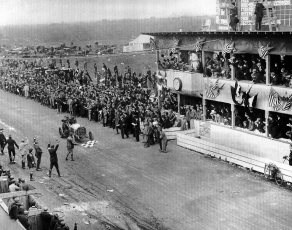
Securing a drive with Locomobile, Robertson, with Glenn Ethridge as his mechanician, claimed the 1908 Vanderbilt Cup in the biggest success of his driving career. Robertson was the first American driver to win in an American car. It was his only driver appearance in a Vanderbilt Cup Race.
Problems at Brighton Beach
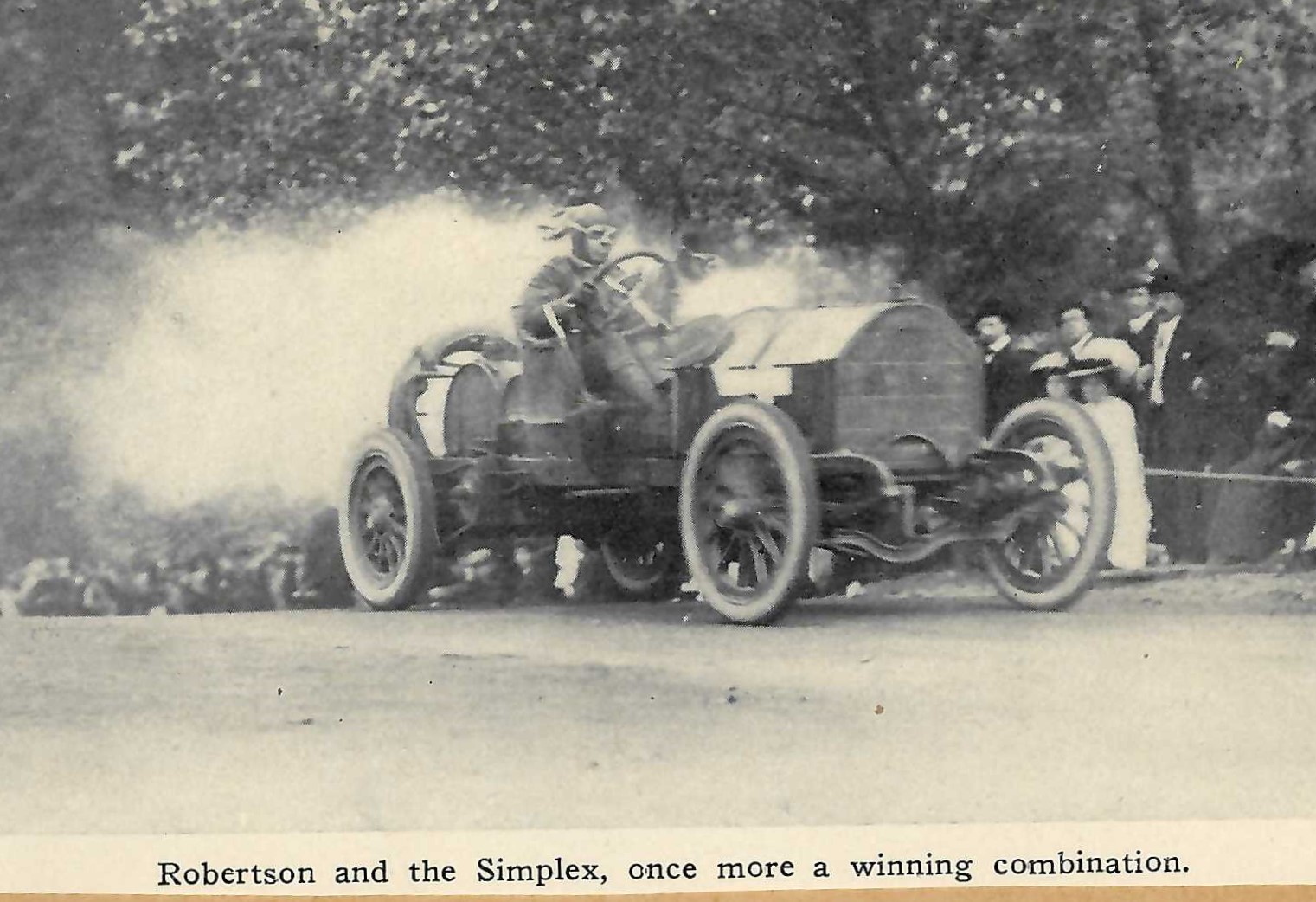
The blemish in all these outstanding accomplishments came in the Brighton Beach endurance race. In the darkness of night, a policeman working at the track darted out onto the course in front a Lozier, a Fiat and Robertson’s Simplex. Robertson recalled the incident in an article he wrote for The Bulb Horn in 1945. The man seemed to push himself away from the Lozier and backed into our path. We hit him with a terrible thud which threw him over our heads and into the path of the Fiat which ran over him.” Their success was all the more remarkable considering that his pit crew had to change the Simplex’ radiator and headlights as a result of the tragic collision. Despite the delays, Robertson and Lescault won handily.
Continuing Success in 1909 (below Robertson & Dingley #1 & #2 at Fairmount)
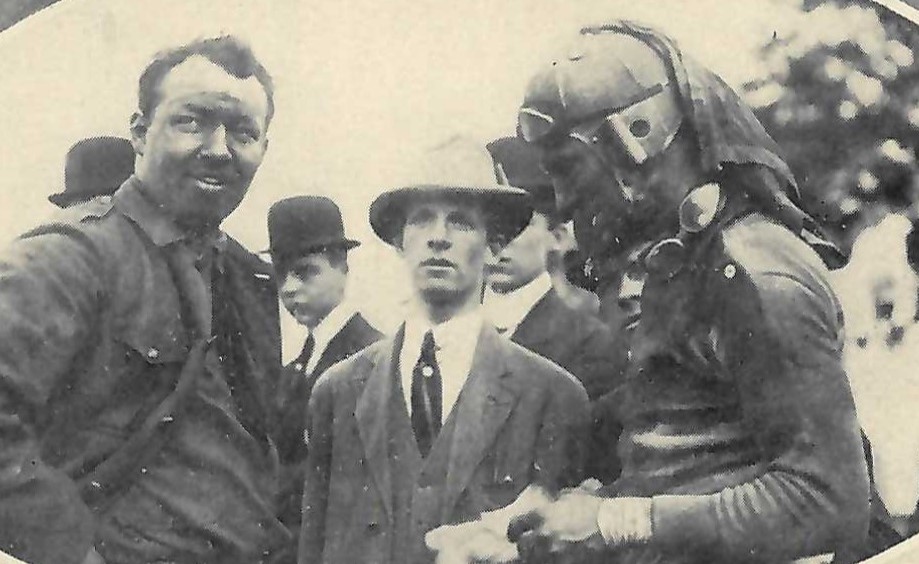
Robertson ran two road races in June 1909 at Crown Point, Indiana with stock Locomobiles from a dealership. The races were run on the same day, one for smaller cars and the other for full-sized machines. In his memoirs Robertson recalled a dispute with Jack Banta, the local Locomobile dealer. Fearful new sparkplugs Robertson believed would help his racer perform better violated race rules, Banta withheld them. Robertson finished third in both races, but not after numerous sparkplug changes.
In July 1909, Robertson and Al Poole were back at Brighton Beach for another 24 hour endurance race. Again driving a Simplex, the company was particularly focused on repeating their winning performance of the previous year. Robertson and Poole agreed to hold to a speed they thought would win the race. However, after Robertson’s last stint in the car he took a stroll over to the grandstand. Within moments the crowd was screaming. Herman Broesel, a Simplex executive, had signaled to Poole to pick up the pace to excite the spectators. Robertson rushed back to the team, signaled for Poole to slow to their agreed pace and ordered Broesel out of the pits.
Robertson enjoyed other important successes in 1909. He won stock car road races at Lowell, Massachusetts and again at Fairmont Park. Also at Brighton Beach, Robertson ran match races – short distance sprints that were a popular form of the sport at the time – against the legendary Ralph DePalma. It was a best-of-five format, but Robertson swept DePalma in three straight heats.
Robertson's Driving Career Ends in 1910
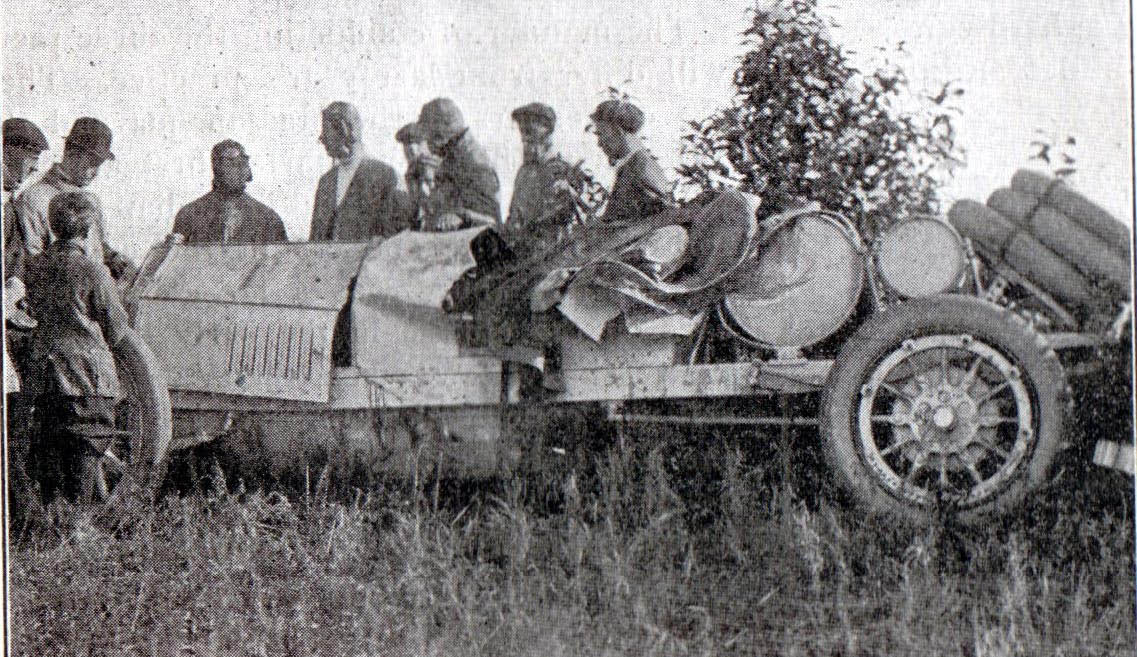
In 1910, Robertson appeared at the inaugural race at Playa Del Ray, California speedway – the first of the giant board tracks that were a big part of American auto racing for most of the next 20 years. There Robertson won a 10-mile sprint in the new Simplex 90 special.
Robertson’s driving career came to an untimely and abrupt conclusion at the scene of his greatest triumph during practice for the 1910 Vanderbilt Cup Race. The decision to allow a news reporter to ride with him in the #8 Benz proved disastrous. When the panicky reporter clutched at Robertson at exactly the wrong moment, his life was changed forever. Arm injuries suffered in the resulting accident meant the end of race driving for George Robertson.
Life After Driving (seen below with Peter Helck in 1947)
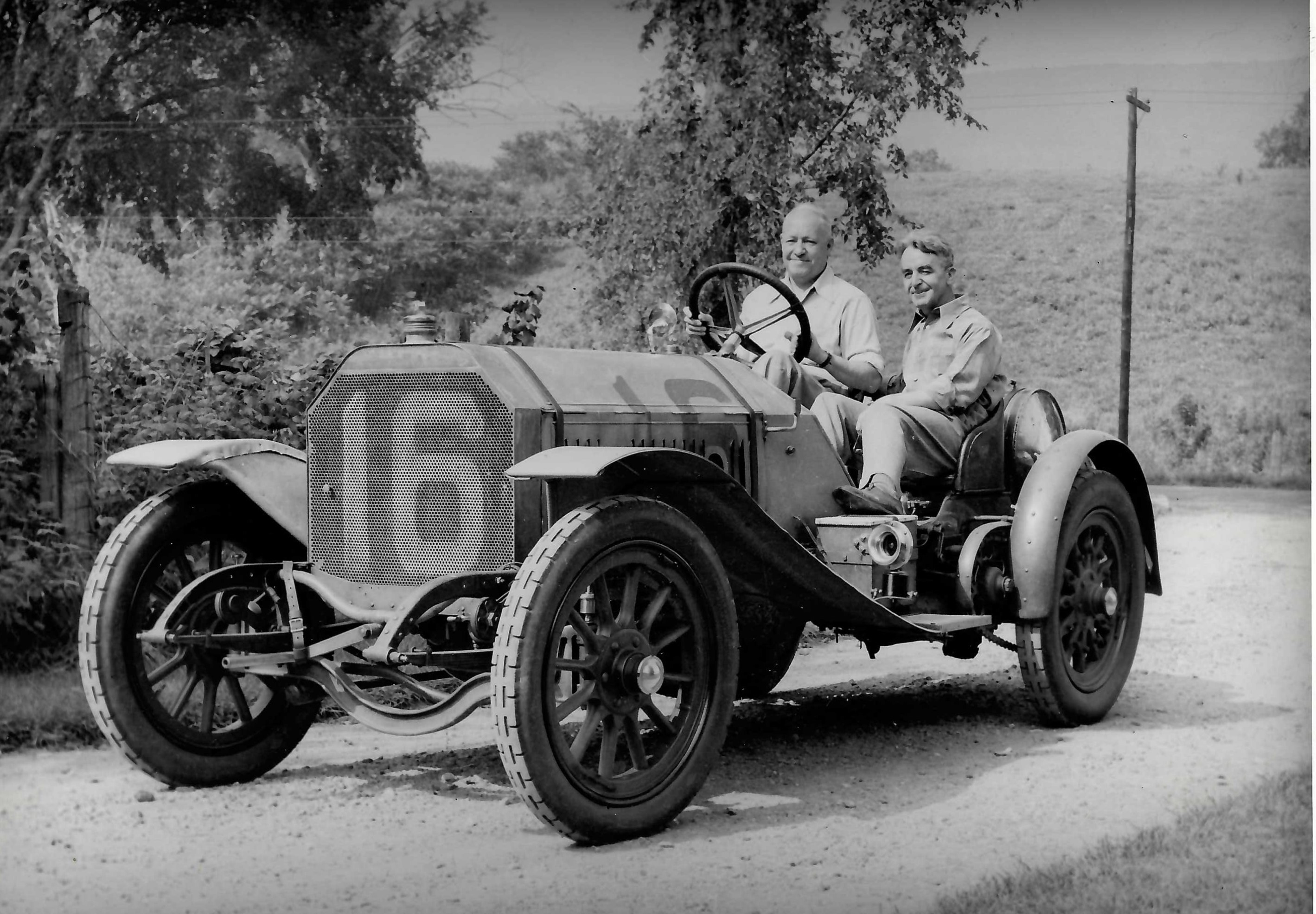
Despite the setback, Robertson carried on with a life full of accomplishment. He enlisted in the U.S. Army, and as a second lieutenant fought in the 1916 Mexican border campaign. In World War I he served in the Quartermaster Corps and later became chief of the Aviation Section of the Army Signal Corps. After the Great War Robertson was director of transportation in Europe for the American Red Cross from 1919 to 1921. The French Government recognized his contributions and made him a Chevalier of the Legion of Honor. He and his wife Lillian had three children, George Robertson, Jr., Joan Robertson Shriver of Summit, New Jersey and a son, Crawford of Garden City, New York. George Robertson, Jr. died serving with the US Army in Germany during the last weeks of World War II. He was shot while on a balcony, probably by a sniper.
Robertson returned to auto racing in 1921 as manager of the American Duesenberg team for the French Grand Prix at Le Mans. The drivers were Jimmy Murphy, Joe Boyer and Andre Dubbonet. Both Murphy and Boyer went on to win the Indianapolis 500 in 1922 and 1924, respectively. Robertson laid out a plan for Boyer to play rabbit and make the field chase him. Murphy was to stay within striking distance, waiting for an opportunity to take command. In the second half of the race, Boyer’s Duesenberg failed and the other leaders were storming into the pits for tires and fuel. Dubbonet faltered as well, and Murphy took a comfortable four-minute lead. With his strategy running like clockwork, Robertson left the pits briefly. When he returned, he found Augie Dusenberg, one of the owners of the company, signaling to Murphy to speed up his pace. Robertson, never shy, ordered Augie Duesenberg out of his own pit. The result was an historic win as Duesenberg became the first American car to win a European Grand Prix. This has happened only one other time, in 1967 with Dan Gurney’s Eagle racer in Belgium.
Robertson moved on to become director of Lincoln automobile and Ford airplane operations for the Eastern District of Ford Motor Company from 1924 to 1928. In the summer of 1929, Robertson became head of North Hempstead Press and publisher of The Roslyn News, The Nassau County Sun and The Williston Post. He was credited with starting a 1930 fund-raising campaign that developed Roslyn Park, now Gerry Park.
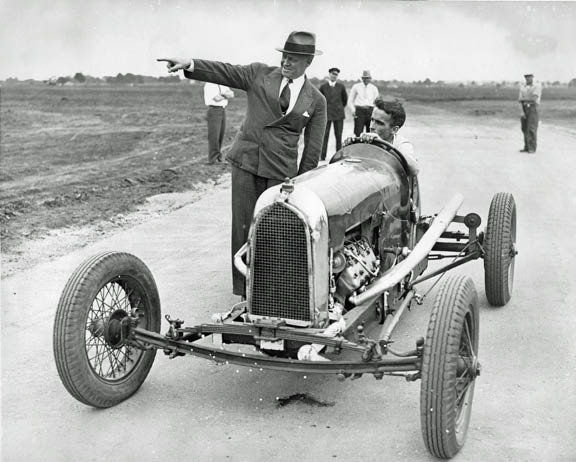
After leaving North Hempstead Press, he became vice president of the Motor Development Corporation. There he helped guide the construction of Roosevelt Raceway in Westbury, Long Island. He was circuit manager when George Washington Vanderbilt III, a second cousin to William K. Vanderbilt Jr., revived the Vanderbilt Cup Race in 1936 and 1937. In the 1940s, the Robertsons lived in Bellerose, Queens on Long Island and moved in the 1950s to East 23rd Street in New York City.
Robertson held a management position at Roto-Shaver Inc., a maker of electric razors, from 1938 until 1955. In his later years, Robertson kept busy as a member of the Antique Automobile Club of America, the American Legion Paris Post No. 1, and the Automobile Old Timers Club.
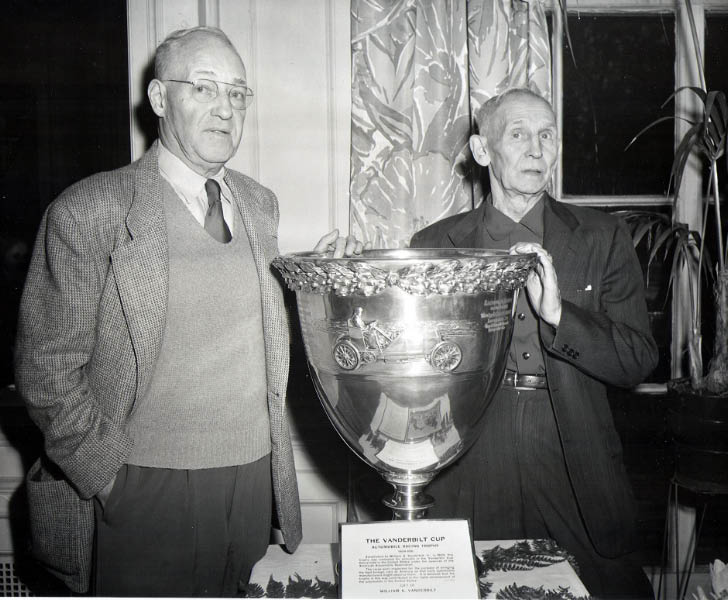
In his last public appearance, Robertson and his trusty mechanician Glenn Ethridge celebrated the 50th anniversary of the first Vanderbilt Cup Race in October 1954 at the Garden City Hotel. Less than a year later, on July 3, 1955, George Robertson passed away at the age of 71.
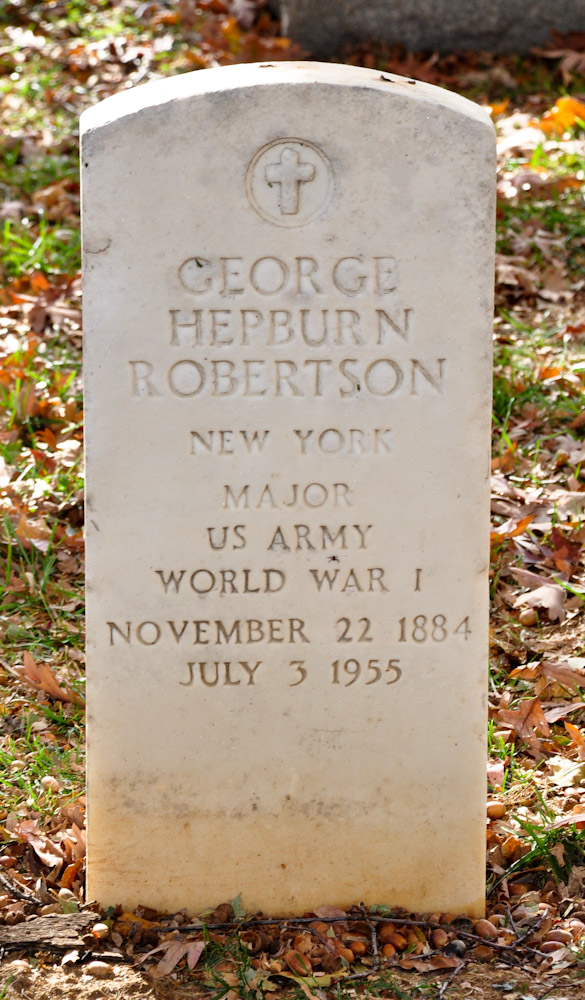
He was buried at Arlington National Cemetery in Arlington, Virginia.
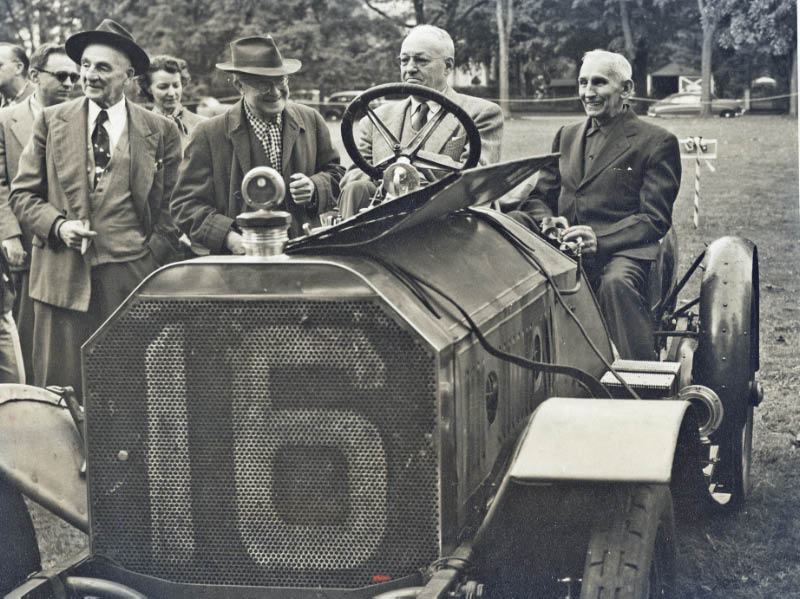









Comments
Great to read this profile of George Robertson. He lived in Bellerose Village , Nassau county just south of the village train station and about a 12 minute walk from my house from where I write this. ( there are three Bellerose areas, the Village I mentioned, Bellerose Terrace an area that surrounds the Cross Island Parkway - which cut the Terrace in half when the parkway was built and there is a Bellerose , in Queens County that is north of Jericho Turnpike ( aka the Jericho Road in years of distant past, Rt. 25)
I used to go out to lunch with Crawford Robertson in the early 1970s on almost a monthly basis , he lived in an apartment house on Stewart Avenue opposite the property of the Garden City Hotel on the corner. Austin Clark and I would spend a great lunch time with Crawford who was a really fine outstanding gentleman , very down to earth , kindhearted etc.
George Robertson lunched with Fred Wagner and Senator Morgan in Patchogue, as reported in The Suffolk County News, Oct. 8, 1909. Readers could wonder about the next Long Island race because Wagner was a notable promoter of racing events and the previous year, he had started the 1908 Vanderbilt Cup Race that Robertson won. Robertson chaired the annual picnics Wagner hosted for the auto industry at Wagner’s Sunnybrook Farm in Smithtown, notably the 10th Annual in 1915, when 300 attendees picnicked and played sports, with racing greats taking a day off from the circuit where they were setting records—Bob Burman, Earl Cooper, Ralph De Palma, Hugh Harding, Barney Oldfield, Dario Resta, Harry Stutz, and George Robertson, all drove to Smithtown to Wagner’s place! For a look at Wagner’s [National Register] Sunnybrook home they visited that day, see “Residence of the Starter of Five Vanderbilt Cup Races Rediscovered in Smithtown,” on the Vanderbilt Cup Races at https://www.vanderbiltcupraces.com/blog/article/the_residence_of_the_starter_of_five_vanderbilt_cup_races_rediscovered_in_s